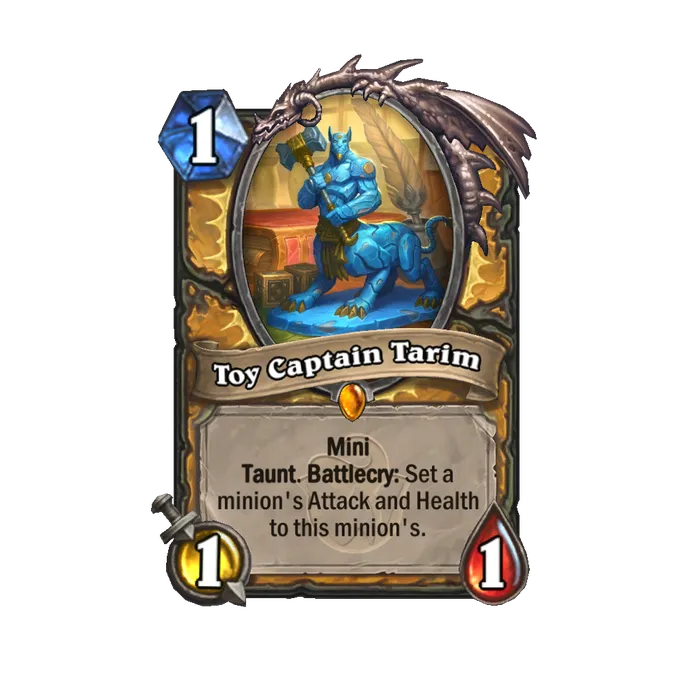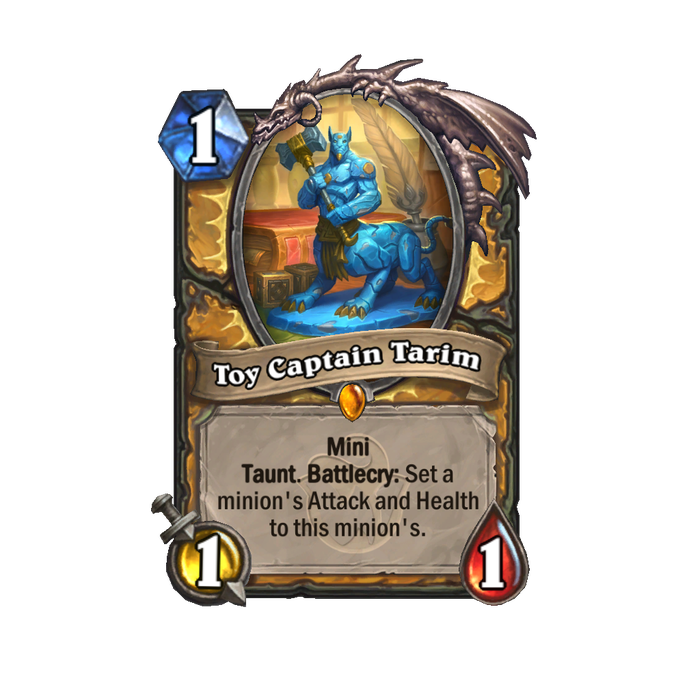
The footprint left by Hearthstone has been undeniably present in many iterations of the virtual CCG genre of the past ten years. Anything from Gwent to Marvel Snap and Queen’s Blood has a dash of Blizzard’s own take released on March 11, 2014. All of these examples had iterated on different universes and influences over the years. Meanwhile, Hearthstone looked upon itself to decide the next steps, a philosophy the team behind it is still carrying forward.
For the game’s 10th anniversary, Game Developer sat down to talk to senior game designer Cora Georgiou and executive producer Nathan Lyons-Smith about balancing nostalgia with novelty, preservation of live service games, and the design pillars behind the upcoming Whizbang’s Workshop expansion.
A decade of Hearthstone history
When asked how he feels upon reaching a decade-long milestone, Nathan Lyons-Smith jokingly replies with “old”. As a developer who’s been with Blizzard for almost as long as Hearthstone’s lifespan, he recalls his time playing the beta fondly. Looking ahead, he’s confident that the team has a lot to offer for another decade.
Cora Georgiou finds the anniversary surreal, as somebody who’s been working on the design team for over three years. Before pursuing this new career path, Georgiou spent four years as a professional esports commentator and host. Hearthstone was, of course, a big passion of hers back then, which was tied to her love for card games since she was young.
“I’ve been playing card games for about 20 years now,” Georgiou told Game Developer over Zoom, “and my brother introduced Hearthstone to me right before I went off to college. Having come from paper card and games, where my only opponent ever was my brother or my father because none of my friends played, being able to play Hearthstone and have an opponent any time I wanted and have it be a different opponent playing a different deck with different experiences was like the coolest thing ever.”
The upcoming Whizbang’s Workshop expansion is also a throwback in and of itself. It evokes characters and motifs of old in its new deck, while simultaneously bringing back past mechanics, such as Spellstones. The key, as the developers explained, was to find the right balance between nostalgia and freshness.
The first pillar was to create an expansion with an overarching theme that was self-referential and nostalgic, acting as a reverence toward the work that Hearthstone has done over the last 10 years. The second had the team remembering that the goal is to continue advancing the core experience, and how that would look. “So while we want to be nostalgic and we want to create an experience that players will recognize and will bring them joy through that lens, we don’t want to retread old ground. We don’t want to just make things that have been made before,” she said.
Alongside the thinking process behind which cards to bring back, making decisions based on the purpose they could serve in the coming year, the team began experimenting on the new signature keyword, called Miniaturize. Named “Twinion” internally, it was originally pitched with the prompt of doing Twinspell on minions. This didn’t have a ton of depth at first. It wasn’t until the theme of Whizbang’s Workshop came to be — making toys that represent smaller versions of larger-than-life characters — that the idea was given the spin it needed.
“The theme kind of came first and then we built the functionality around it of, okay well, if I play this and it gives me another copy in my hand, what if that other copy was smaller? What if it was a 1 attack/1 health card that costs 1 Mana? How can we make designs for these minions that specifically make it so that the base version and the mini [version] play very differently even though they have the same text box, but just because the mana cost and the stats are different,” she said.

Image via Blizzard Entertainment.
One example is Toy Captain Tarim. The card has the same text box for its both versions — once it’s set on the board, its Battlecry sets a minion’s health and attack equal to its own. Now, the regular version, being a 3 attack / 7 health, can be used to buff one of your minions. While the mini version, being a 1 attack / 1 health, is perfect to debuff an enemy’s minion instead. Despite being the same card, once the cost and stats change, the use cases are dramatically altered.
Refinement is still on the cards
Speaking of dramatic alterations, the process behind the making of the Zilliax Deluxe 3000 card was quite different than usual. The concept is one of a modular minion card, which players can mix and match from a pool of options to create multiple combinations using eight functional and eight cosmetic modules, and synergies, that complement the rest of their selected deck. This was a tall task that required targeted playtesting and working closely with the UI and engineering teams, deciding how many factors the modular aspect would actually entail. It was a year-long process.
As Georgiou told Game Developer, the initial concept was far more complex. It began from the query of what could happen if you could combine two minions from your collection. But text boxes can only be so long, so then began the selection process of which minions could fit this criteria, following with minions that only cost 5 Mana or less. After some deliberation, the team realized that the novelty had been dissipated during that selection phase. So they asked themselves: why not just make the options?
“We can fully craft these text boxes, we can make sure that they fit a lot of the restrictions that we have as far as text length and Mana cost, and we can make sure that they’re exciting and that there’s a lot of optionality here,” she said. “That’s sort of how the idea of the modules came to be.”
With Whizbang’s Workshop commemorating the 10th anniversary of Hearthstone, it’s interesting to ponder on where the game could go from here, and if there’s a ceiling at all. According to Lyons-Smith, that ceiling remains high. The main current focus is to continue honing on approachability, and making the onboarding process easier.
Last year, the team introduced catch-up packs to help players be up to speed with some of the newer card options, while Lyons-Smith mentioned the accessibility community for mods to aid disabled players. This includes Hearthstone Access, a mod for visually impaired screen-reader users.
A large part of Hearthstone’s design is built upon lessons learned from previous sets, and failures, including mechanics that the team worked internally that didn’t get shipped for a variety of reasons. The goal is then to try and build upon those ideas, finding solutions to old problems. Increasing the size of the team since its original launch has helped with building new modes as well. It’s worth remembering that the team suffered layoffs in late 2023 as a result of “internal restructuring.”
Looking ahead, both developers consider the digital card game space holds so much possibility and potential still. Georgiou mentioned World of Warcraft as a narrative backing for Hearthstone, with each new expansion also opening the door to future ideas to iterate upon.
When asked about whether or not preservation has been on the team’s mind — especially after the news that Duels Mode is scheduled to be removed in April 2024 — Lyons-Smith said the team doesn’t have any plans to make the core Hearthstone experience available offline at the moment. As of now, there are only a couple of features that can be accessed without an internet connection, mostly around your deck collection.
“This is primarily due to the game being built and architected for over a decade, the game has assumptions of the level of connectivity required to play,” he said. “Making that kind of very fundamental change is not where I think we wanna go make our investment. [We would] much rather do that in new gameplay, new modes, new features for players because that’s worked really well for us for the last 10 years.”
For now, it seems the main interest of the team at large is to continue innovating, looking back at the last decade of Hearthstone, and the work that’s been done, to decide where to go next.
“As a designer, I often feel in competition with myself, with the things that we’ve done previously, and it’s like, how can we do better?” Georgiou said. “I’ve learned so much in the last three years. How can I make better content now than I did three years ago? So just constantly learning and growing and trying to outdo the me that I was.”






